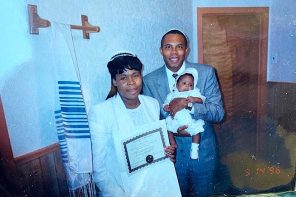About a year ago, while I was napping in my hotel room in between sessions at a conference for Baptist scholars of religion, I dreamed I was walking across a plowed field. Out of the black soil grew a single yellow flower. Taken with the flower’s beauty, I went to pick it, when a woman stopped me. “That flower will begin to wither the moment you pluck it,” she said. “If you must take it with you, pull it by the roots and take some of the native soil with you. Your hands will be dirty. You will need to provide your own pot, but you will preserve its beauty a little while longer.” To this day, I remember the woman’s words exactly—partly because I thought it was a pretty cool dream (especially for a napping Baptist), mostly because the woman was Adrienne Rich.
With her recent death, newspapers and journals are blossoming with tributes to Adrienne Rich. They are noting that she inspired generations of women, writers and non-writers alike. They are noting her contributions to LGBT communities. These accounts are correct.
Less named is Rich’s profound sense of religiosity. By a number of criteria, she was not a religious poet or a religious person. Those who believe religious identity reduces to unqualified assent to the right doctrines, possession of the right genes, or endorsement of the right state will find little religious in Rich’s life and work. But Rich has something to offer any person who wrestles with a tradition, and all of its tangled roots and branches, in the hopes of achieving an identity.
A “Non-Jewish Jew”
The daughter of a Jewish father and a gentile mother, born almost astraddle the Mason-Dixon Line, Rich engaged in border negotiations from the outset. According to Jewish law, she was not a Jew; according to Nazi definitions, she would have been Jewish enough for Auschwitz. She was baptized Episcopalian and attended one of this genteel denomination’s Baltimore congregations for a while in her youth. She described her father, a Southern-born professor in the Johns Hopkins School of Medicine, as an “assimilated Jew.” He was barely what some would call a “cultural Jew.” In her late adolescence and into her college years, she became sensitive to the subterranean presences and conspicuous absences of Jewishness in the home of her upbringing. She realized her Jewishness would always be at once a choice and a kind of irresistible inheritance.
As a Jew, Rich claimed and was claimed by a vast, often internally-dissident tradition (she had the advantage of wrestling with a tradition that had wrestling in its marrow). She also insisted upon claiming and being claimed by a wider birthright than that tradition sometimes allowed. Rich knew she had to claim her Jewish particularity; Jewishness was going to claim her whether she liked it or not. And being a Jew meant not being someone else. But Rich lived with the hope that, paradoxically, she could find something expansive in the particularity—something inside Jewish tradition that operated against that same tradition’s more troubling parochialisms, something that connected her to all of humanity.
She refused to let the tradition go until it blessed her—and others with her. In her 2003 essay, “Jewish Days and Nights,” published first in a collection titled Wrestling with Zion, Rich reflected on “the possibility of a ‘non-Jewish Jew’”:
Not a Jew trying to pass, deny, or escape from the wounds and fears of the community, but a Jew resistant to dogma, separatism, to ‘remembering instead of thinking,’ in Nadine Gordimer’s words—anything that shuts down the music of the future. A Jew whose solidarity with the exiled and persecuted is unrestricted. A Jew without borders.
Outrage, and Possibility
Rich’s approach to her religious identity was of a piece with her approach to every aspect of her identity. For Rich, any identity worth achieving involved struggle and resistance—be it national identity (“a patriot is one who wrestles for the / soul of her country / as she wrestles for her own being”), gender identity (“A thinking woman sleeps with monsters. / The beak that grips her, she becomes.”), or the committed poet’s identity (“She cannot teach the end of bonds; but she can refuse to justify, accord with, ignore their existence”).
This daughter of a fairly well-to-do Baltimore family—raised in part by an African-American domestic worker—also understood the struggle for identity did not occur only among the marginalized, though the struggle became starkly manifest there. Like James Baldwin, one of her primary influences, she knew that victimizing groups were also their own victims, imperiled by the injustices they perpetuated and from which they benefited, consciously and unconsciously. They were in need of a redemption that required the constant witness of marginalized people. Like Baldwin, Rich realized that “oppressor” and “oppressed” were not simple, static, mutually-exclusive categories with lifetime members.
Perhaps more fully than Baldwin, Rich was aware of her own dual memberships. Like Muriel Rukeyser before her, this awareness enabled her to be at once a poet of outrage and a poet of possibility. And Rich knew that a person who had the privilege of denying the unsettling murmurs in his own heart often became astonished and angered when others started acting up and speaking out about their struggles. She knew that she who would not admit struggle within herself would do everything in herself power to sweep the public square clean of struggling others. Anyone who could deny the struggle on any level of existence stood in danger of becoming a terror to all of existence. She knew that she herself stood in danger of succumbing to this moral and spiritual weakness. The beak that grips her…
Certainly, the struggle for identity at society’s presumed centers differs significantly from the struggles at the margins. The achievement and sustenance of a Jewish identity in America is a substantially different project—more complicated and risky—than the achievement and sustenance of, say, an American Christian identity. The same holds true for heterosexuality versus homosexuality, and maleness versus femaleness. I am a heterosexual Christian white man. Whence my struggle? It is not visible to me when I hold the hand of my partner at a restaurant, or walk alone and unworried down a secluded trail, or wear my favorite head covering in public. The price of my ticket in my society seems discounted, on the surface. I need people like Rich to help me understand who is picking up the difference for my discount and what is required of me if I reject that discount to lessen the difference.
The price of any identity worth having is high: a profound struggle. Rich encourages me that I will come away from the struggle blessed, with a new name. She reminds me that I will come away limping.
The Treasures That Prevail
Adrienne died the first full week of spring, just before what I call Holy Week. During this week, I examine with heightened sensitivity my particular buy-in to the cross, the empty tomb, the via dolorosa. I am not always sure I want to be numbered among Christians; I know there are a number of Christians who aren’t so sure I should be so numbered. My examination occurs alongside my spouse’s examination. She is an ordained Baptist minister who with unspeakable grace regularly braves misogynistic condescension: the assumption among even thoughtful, well-meaning people that her spouse possesses the professional, theological mind in the relationship. The struggle for religious identity is a struggle for gender identity for each of us. The Old Ship of Zion is mine—as wreck and as working vessel. Zion by itself is not enough. Adrienne speaks to me across the waters. I came to see the damage that was done / and the treasures that prevail.
Adrienne died during this prematurely refulgent spring. Tree buds are yet to burst here in New Jersey. Flowers are blossoming where little else is blossoming. An Easter people, we Christians like to pick flowers and place them on graves. My Jewish friends inform me it is not customary for Jews to do this.
In 1982, Adrienne Cecile Rich wrapped up her essay, “Split at the Root: An Essay on Jewish Identity,” with these words:
This essay, then, has no conclusions: it is another beginning for me. Not just a way of saying, in 1982 Right Wing America, I , too, will wear the yellow star. It’s a moving into accountability, enlarging the range of accountability. I know that in the rest of my life, the next half century or so, every aspect of my identity will have to be engaged. The middle-class white girl taught to trade obedience for privilege. The Jewish lesbian raised to be a heterosexual gentile. The woman who first heard oppression named and analyzed in the Black Civil Rights struggle. The woman with three sons, the feminist who hates male violence. The woman limping with a cane, the woman who has stopped bleeding are also accountable. The poet who knows that beautiful language can lie, that the oppressor’s language sometimes sounds beautiful. The woman trying, as part of her resistance, to clean up her act.
Sister Adrienne struggled with God and with men and prevailed.




